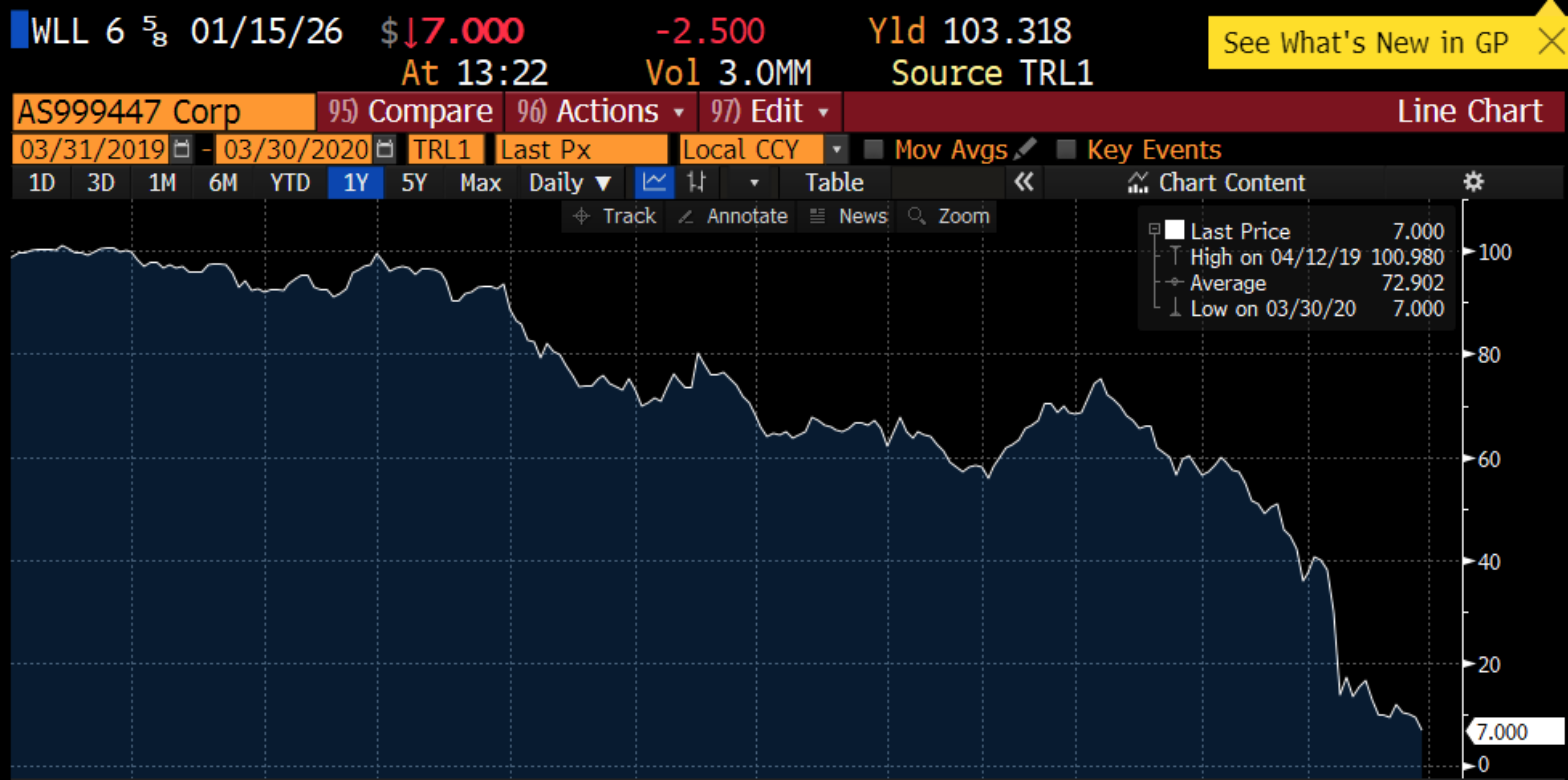And all of the action is at the pre-petition notes level of the cap stack.*** The holders of the $7.4b of pre-petition notes**** will walk away with 99% of the equity in the reorganized company (subject to various means of dilution) — a 63% recovery based on the offered valuation of the company. They will also receive up to $1.25b of new tranche b senior unsecured convertible notes and the right to participate in new tranche a senior unsecured notes. Every other class — but for existing equity (which will get wiped out) — will ride through as if this shabang ain’t even happening.
You must be wondering: how in bloody hell does a company rack up over $8b of debt? $8 BILLION!! That’s just oil and gas, darling.
Weatherford is a provider of equipment and services used in the drilling, evaluation, completion, production, and intervention of oil and natural gas wells; it operates in over 80 countries worldwide and has service and sales locations in nearly all of the oil and natural gas producing regions in the world. It operates in a highly commoditized industry and so the company dedicates millions each year to research and development in an effort to separate itself from the pack and provide value to end users that is unmatched in the market.
Which, by its own admission, it fails to do. All of that R&D notwithstanding, Weatherford nevertheless provide a commoditized product in a tough macro environment. And while all of that debt should have helped position the company to crush less-capitalized competitors, it ultimately proved to be an albatross.
To service this debt, the debtors require stability in the oil and natural gas markets at prices that catalyze E&P companies to drill, baby, drill. An oil field services company like Weatherford can only make money if there are oil operations to service. With oil and natural gas trading at low levels for years…well, you see the issue. Per the company’s 8-K:
The sustained drop in oil and gas prices has impacted companies throughout the oil and gas industry including Weatherford and the majority of its customers. As spending on exploration, development, and production of oil and natural gas has decreased so has demand for Weatherford’s services and products. The decline in spending by oil and gas companies has had a significant effect on the Debtors’ financial health. To illustrate, on a consolidated basis, the Company’s cash flows from operating activities have been negative $304 million, negative $388 million, and negative $242 million in fiscal years 2016, 2017, and 2018, respectively.
While not quite at Uber Inc. ($UBER) levels, this company is practically lighting money on fire.
Relating to the competition:
The oilfield services and equipment industry is saturated with competition from various companies that operate in the same sector and the same regions of the world as Weatherford. The primary competitive factors include safety, performance, price, quality, and breadth of products and services. Weatherford also faces competition from regional suppliers in some of the sectors in which it operates as these suppliers offer limited equipment and services that are specifically tailored to the relevant local market. Some of the Company’s competitors have better financial and technical resources, which allows them to pursue more vigorous marketing and expansion activities. This heavily competitive market has impacted the Company’s ability to maintain its market share and defend or maintain the pricing for its products and services. Heavy competition has also impacted the Company’s ability to negotiate contract terms with its customers and suppliers, which has resulted in the Company accepting suboptimal terms.
The squeeze is on, ladies and gentlemen. As E&P companies look to cut costs in the face of increased pressure from investors to lean out, they are putting companies like Weatherford through the ringer. You bet your a$$ they’re getting “suboptimal terms.”
Compounding matters, of course, is the government:
…operations are also subject to extensive federal, international, state and local laws and regulations relating to environmental production, waste management and cleanup of hazardous materials, and other matters. Compliance with the various requirements imposed by these laws and regulations has also resulted in increased capital expenditures as companies in these sectors have had to make significant investments to ensure compliance.
Well GOSH DARN. If only Weatherford had unfettered ability to pollute the hell out of the countryside and our waters all of that debt could be paid off at par plus. Those gosh darn government hacks.
All of these factors combined to strain the debtors’ liquidity “for an extended period of time.” Accordingly, the company went into cost cutting mode.***** In Q4 ‘17, it eliminated 900 jobs to the tune of $114mm in annualized savings. In 2018, the company — with the assistance of McKinsey Restructuring & Transformation Services — continued with workforce reductions, facility consolidations, and other measures.
Yet, the squeeze continued. Per the company:
Despite implementing these efficient and strategic initiatives, the Company continued to face declining revenue and cash flow, as well as market challenges. Due to the Company’s increasingly tight liquidity, its key vendors began requiring shortened payment terms, including pay on delivery or prepayment for all supplies purchased by the Company. This contributed to additional pressure on liquidity that the Company could not sustain. Additionally, as discussed above, the highly competitive market that the Company operates in posed challenges for the Company in winning new bids, resulting in decreased revenue.
Weatherford was therefore forced to divest assets. YOU KNOW YOU’RE LEVERAGED TO THE HILT WHEN YOU SELL NEARLY $1B OF ASSETS AND IT BARELY MOVES THE NEEDLE. Sale proceeds were coming in just to go back out for debt service. The company had a leverage ratio of OVER 10X EBITDA. THIS IS AN UNMITIGATED F*CKING DISASTER. What’s actually astonishing is that the company notes that it retained Lazard Freres & Co LLC ($LZ) and Latham & Watkins LLP in December ‘18 and April ‘19, respectively. Taking them at their word (and we could have sworn Latham was in there much earlier than April), WHAT THE HELL WERE THEY WAITING FOR? $600mm of annual interest payments, pending maturities, untenable leverage relative to competitors, AND squeezing vendors and the company only got its sh*t together in April? They couldn’t possibly have been THAT inept. Ah, who are we kidding? We’re talking about bankruptcy here.
Now, though, the company has a deal****** and so the upshot is that it is well-positioned for a quick trip into bankruptcy. Indeed, it seeks plan confirmation no later than September 15, 2019 — a nice not-as-speedy-as-other-recent-prepacks-but-speedy prepack. To finance the cases, the company will seek approval of up to $750mm DIP revolver and a $1b DIP term loan. And it is optimistic that it will be well-positioned for the future:
















